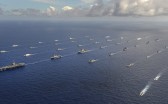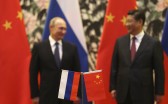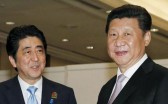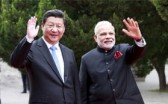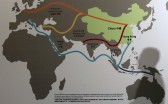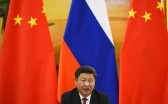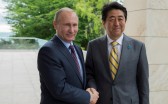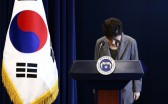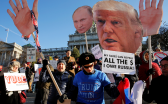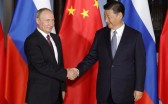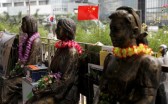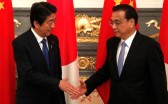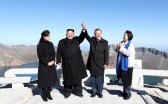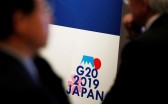The Japan-US-India cooperation has progressed dramatically over the last two months (June-July 2016). Three developments, in particular, have highlighted an advance in the trilateral security cooperation. First, defense ministers from all three countries at the 15th Asia Security Summit (Shangri-La Dialogue) emphasized the importance of trilateral security cooperation. Nakatani asserted, “With regard to its relationship with India and the United States, Japan is taking a proactive approach. In order to maintain maritime security in such large areas as the Indian and Pacific oceans, cooperation is needed between major powers, such as India, and very strong and capable countries like America, along with Japan. These three countries can protect our oceans by coming together for joint training exercises, mutual cooperation and discussions. Japan is very positive towards this relationship.”1
Second, the Japan-US-India Malabar maritime exercises were held in the Philippine Sea. They included combat exercises with anti-submarine, anti-surface ships, and anti-air exercises. Presumably due to the significance of this event, a Chinese spy warship tried to enter Japan’s territorial waters to collect information on these exercises. Ash Carter, the US secretary of defense, explained, “Through joint activities like this year’s Malabar exercise, the US–Japan–India trilateral relationship is starting to provide real, practical security cooperation that spans the entire region, from the Indian Ocean to the Western Pacific.”2
Third, just after the Award of the Arbitral Tribunal on July 12, all three countries made similar statements about the issue of the South China Sea. When Defense Minister Nakatani Gen visited New Delhi on July 14, the joint statement mentioned: “In this context, they noted the Award of the Arbitral Tribunal on the South China Sea under the United Nations Convention on Laws of the Sea (UNCLOS) on 12 July 2016, and urged all parties to show utmost respect for the UNCLOS.”3 And US assistant secretary of defense for East Asia Abraham Denmark said that China should follow India’s example in resolving a maritime dispute with Bangladesh by implementing the decision by the tribunal appointed by the Permanent Court of Arbitration.4 These statements indicate that the three countries have similar interests in the South China Sea.
Trilateral collaboration and bilateral moves that lead in that direction have surfaced often over the last 8 months. Since December 2015, India, Japan, and the United States have held high-level security negotiations virtually every month. Prime Minister Abe visited India in December 2015. Carter was in India in April only a month after the chief of the US Pacific Command visited there. India’s defense minister was in the United States in December, and the chief of the Indian Army visited the United States in April. Prime Minister Modi met with President Obama in Washington in June. The statements at the Shangri-La Dialogue reflect Japan-US-India security cooperation in the Indo-Pacific, whose momentum has kept growing. In the wake of the South China Sea court ruling, Nakatani and Indian defense minister Manohar Parrikar responded with a call to China to resolve disputes peacefully based on international law and agreement to start bilateral maritime strategy discussions. The ruling has intensified Japan’s pursuit of India in a trilateral context with the United States to join in keeping the regional maritime order.
Themes of Japan-US-India Defense Negotiations
There are three important topics high-level officials are discussing. First, they are negotiating maritime security cooperation to establish an anti-submarine network. Since the mid-2000s, China’s submarine activities in the Indian Ocean have been expanding. In 2012, at least 22 contacts were recorded with vessels suspected to be Chinese nuclear submarines patrolling in the Indian Ocean.5 On December 3, 2013, the Foreign Affairs Office of China’s Ministry of Defense informed India’s military attaché in Beijing about the two-month deployment of one of their nuclear submarines.6 In 2014, at least two Chinese submarines and one submarine support-ship docked at a port in Sri Lanka. In 2015 and 2016, one Chinese submarine called at the port of Karachi in Pakistan. Recently, Chinese submarines have been sighted, on average, four times every three months.7 Their activities indicate that the area of China’s maritime interest is expanding in the Indian Ocean with worrisome impact since these submarines can attack India’s nuclear ballistic missile submarines and Sea Lines of Communications at will.
To detect these submarine activities, Japan-US-India would need to check the sea routes from Hainan Island to India’s territorial waters. Thus, the United States and India are negotiating to share information when Chinese submarines leave from Hainan for the Indian Ocean, and media reports indicate that the Japan-US-India triangle is planning to install a submarine detecting sensor system in India’s near seas.8 As part of the project, Japan is planning to build infrastructure for India, including a fiber cable connection between India and the Andaman Nicobar Islands. Japan is also planning to assist India’s airport project in the Andaman Nicobar Islands and Lakshadweep Islands by exporting a sophisticated radar system, power plants, etc.
Second, to strengthen cooperation, these three countries have been negotiating an agreement for sharing information and supplying relevant equipment. When Abe visited India in December 2015, both governments agreed to a transfer of defense equipment and technology, as well as security measures for the protection of classified military information. Now, the United States and India are negotiating three agreements, including the Logistics Exchange Memorandum of Agreement (LEMOA), the Basic Exchange and Cooperation Agreement for Geospatial Cooperation (BECA), and a Communications Interoperability and Secrecy Memorandum of Agreement (CISMOA). In the past, the Indian government hesitated to conclude such agreements. Indeed, some Indian officials mistook them as forcing India to automatically join US-led military operations. The Indian army and air force also hesitated to conclude them because the United States would be able to detect India’s military activities more easily. These are why such agreements were on hold since 2002, but negotiations have progressed. Especially, the LEMOA is awaiting finalization. It will not be a surprise if a US-India agreement is now reached. Despite the fact that the US-India military cooperation has already become active, these agreements will ease restrictions on joint military operations and exercises, while promoting further cooperation.
Third, the arms trade is the main topic of cooperation. It is well known that Japan and India are negotiating the sale of Japanese US-2 rescue planes. In addition, US-India prospects include a nuclear aircraft carrier, submarines, drones, engines for fighter jets, a new combat system for fighter jets, and trainer planes. If India possesses a nuclear aircraft carrier, which has catapult assisting launch equipment and an E-2D carrier-based early warning plane, the capabilities of India’s aircraft carrier battle group would overtake China’s.
Given the steady progress in Japan-US-India relations, some may ask whether their trilateral security cooperation will turn into a trilateral alliance. While the positive factors are several, there are also some questions that have impeded the relationship, and in the view of many an expert, pose a challenge to further development. First and most important is the question, “Can Japan and the United States cooperate with India if India seeks ‘non- alignment’?” Having long adhered to non-alignment, “India believes in the notion of strategic autonomy as the guiding principle of its foreign policy rooted in its national identity,”9 as Titli Basu argued in the first round of this exchange. Sticking to this policy, India would not join the Japan-US alliance.
How can this situation be resolved? Perhaps, Japan and the United States can learn from the Soviet Union, which became a kind of “ally” of India after signing the Indo-Soviet Treaty of Friendship and Cooperation in 1971 despite India’s claim to be “non-aligned.” Russia has maintained a 70% share of the external arms purchases of the Indian armed forces, capitalizing on the legacy from the 1970s and 1980s when the Soviet Union supported the wars India fought – the Indo-China war in 1962 and Indo-Pakistan war in 1965. A steady attitude made this relationship possible. If India can ally with the Soviet Union, then in the near future it can also ally with Japan and the United States. There is reason to be confident that the Japan-US-India security cooperation will overcome difficulties and promote better mutual relations in the near future.
1. International Institute for Strategic Studies, “Managing Military Competition in Asia: Q&A,” June 4, 2016, https://www.iiss.org/en/events/shangri%20la%20dialogue/archive/shangri-la-dialogue-2016-4a4b/plenary2-e480/qa-3f6d.
2. Ash Carter, “Remarks by Secretary Carter and Q&A at the Shangri-La Dialogue, Singapore,” June 5, 2016, http://www.defense.gov/News/News-Transcripts/Transcript-View/Article/791472/remarks-by-secretary-carter-and-qa-at-the-shangri-la-dialogue-singapore.
3. Japanese Ministry of Defense, “Joint Press Release,” July 14, 2016,
http://www.mod.go.jp/j/press/youjin/2016/07/14_j_india_jpr_e.html.
4. “China Rejects US Advise to Follow India’s Example Over South China Sea Row,” The Times of India. July 13, 2016,
http://timesofindia.indiatimes.com/world/china/China-rejects-US-advise-to-follow-Indias-example-over-South-China-Sea-row/articleshow/53194694.cms
5. Rahul Singh, “China’s Submarines in Indian Ocean Worry Indian Navy,” Hindustan Times. April 7, 2013,
http://www.hindustantimes.com/delhi/china-s-submarines-in-indian-ocean-worry-indian-navy/story-0Fjcrc7s9jlHwg1ybpiTsL.html.
6. “Chinese N-Sub Prowled Indian Ocean: Two-Month Patrol Demonstrated Glitch-Free Deployment,”Indian Military Review 5, no. 4 (2014): 8.
7. Sanjeev Miglani and Greg Torode, “Wary of China’s Indian Ocean Activities, U.S., India Discuss Anti-Submarine Warfare,” Reuters, May 2, 2016,
http://www.reuters.com/article/us-india-usa-submarines-idUSKCN0XS1NS.
8. Abhijit Singh, “India’s ‘Undersea Wall’ in the Eastern Indian Ocean,” Asia Maritime Transparency Initiative, June 14, 2016,
http://amti.csis.org/indias-undersea-wall-eastern-indian-ocean/.
9. Titli Basu, “Indo-Pacific Military Ties Negative Scenario I: India’s Approach towards Indo-Pacific Triangularity,” The Asan Forum 4, no. 3 (2016).
